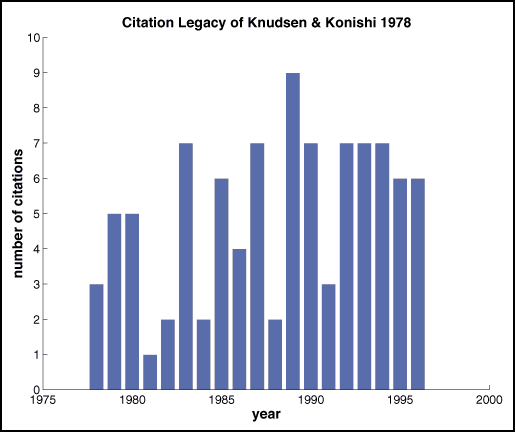

Knudsen and Konishi have actively pursued the neural bases of sound perception, principally localization of sound in 3-dimensional space by the Barn Owl, Tyto alba. While preliminary efforts have been ongoing at least since the 1960s, this 1978 Science article reflects the synthesis of their attempts to actually map the neural circuitry as it relates to sound location. Since 1978, the paper has been regularly cited for a total of 91 times through August of 1996 to yield an average of 5.06 citations per year. Most of these citation have come from within the neuroscience community (computational, neurophysiological, and behavioral) as well as from ecologists and avian physiologists (neuroethological perspectives of sound localizations). This seminal paper spawned an interesting general science perspective of sound localization in Scientific American, April 1993. Recently published works (1996) citing this paper have involved Casseday's theories of the operation of the inferior colliculus, Brugge's continuing work on the spatial receptive fields of neurons in the auditory cortex of the cat, and Keller's work on summing localizations in the barn owl. What is impressive about Knudsen and Konishi's work is that they have rather successfully elucidated the neural algorithm for a specific sensory task. This has been accomplished with similar detail in only one other system, the jamming avoidance response (JAR) in the weakly electric fish Eigenmannia, by Heiligenberg and colleagues.
